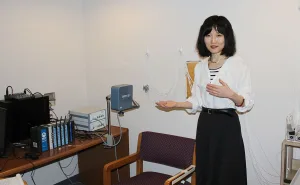Enhanced Survival Prediction in Head and Neck Cancer Through Advanced Imaging Analysis
Predicting survival rates for head and neck cancer patients has long been a complex challenge in oncology. However, recent advancements in medical imaging and data analysis techniques are showing promising results. A new approach, combining PET/CT radiomics with deep learning features, is significantly improving the accuracy of these predictions.
The Power of Combined Imaging
Traditional methods often rely on single imaging modalities or limited data sets. This innovative approach leverages the strengths of both PET (Positron Emission Tomography) and CT (Computed Tomography) scans. By integrating radiomic features – quantitative data extracted from medical images – with deep learning, a more comprehensive and nuanced understanding of the tumor microenvironment is achieved.
- PET Scans: Provide insights into the metabolic activity of cancer cells.
- CT Scans: Offer detailed anatomical information about the tumor’s size, shape, and location.
Deep Learning’s Role
Deep learning algorithms are trained on vast amounts of imaging data to identify patterns and relationships that may not be apparent to the human eye. When combined with radiomics, deep learning can help to:
- Identify subtle features indicative of tumor aggressiveness.
- Predict the likelihood of treatment response.
- Estimate the risk of recurrence.
How the Stacked Fusion Works
The ‘stacked fusion’ method essentially combines the results of radiomic analysis and deep learning into a single, powerful predictive model. This multi-layered approach allows for a more robust and accurate assessment of a patient’s prognosis.
- Data Acquisition: PET/CT scans are acquired for each patient.
- Radiomic Feature Extraction: Quantitative features are extracted from the images.
- Deep Learning Analysis: Deep learning models are trained on the imaging data.
- Fusion and Prediction: Radiomic features and deep learning outputs are combined to predict survival.
Potential Impact on Patient Care
The improved accuracy in survival prediction has several important implications for patient care:
- Personalized Treatment Plans: Doctors can tailor treatment strategies based on a more precise understanding of a patient’s individual risk.
- Improved Decision-Making: Patients and their families can make more informed decisions about treatment options.
- Clinical Trial Design: More accurate predictive models can help to identify patients who are most likely to benefit from specific therapies.
Final Overview
The integration of PET/CT radiomics and deep learning represents a significant step forward in the field of oncology. By providing more accurate survival predictions, this approach has the potential to improve patient outcomes and transform the way head and neck cancer is managed.




+ There are no comments
Add yours